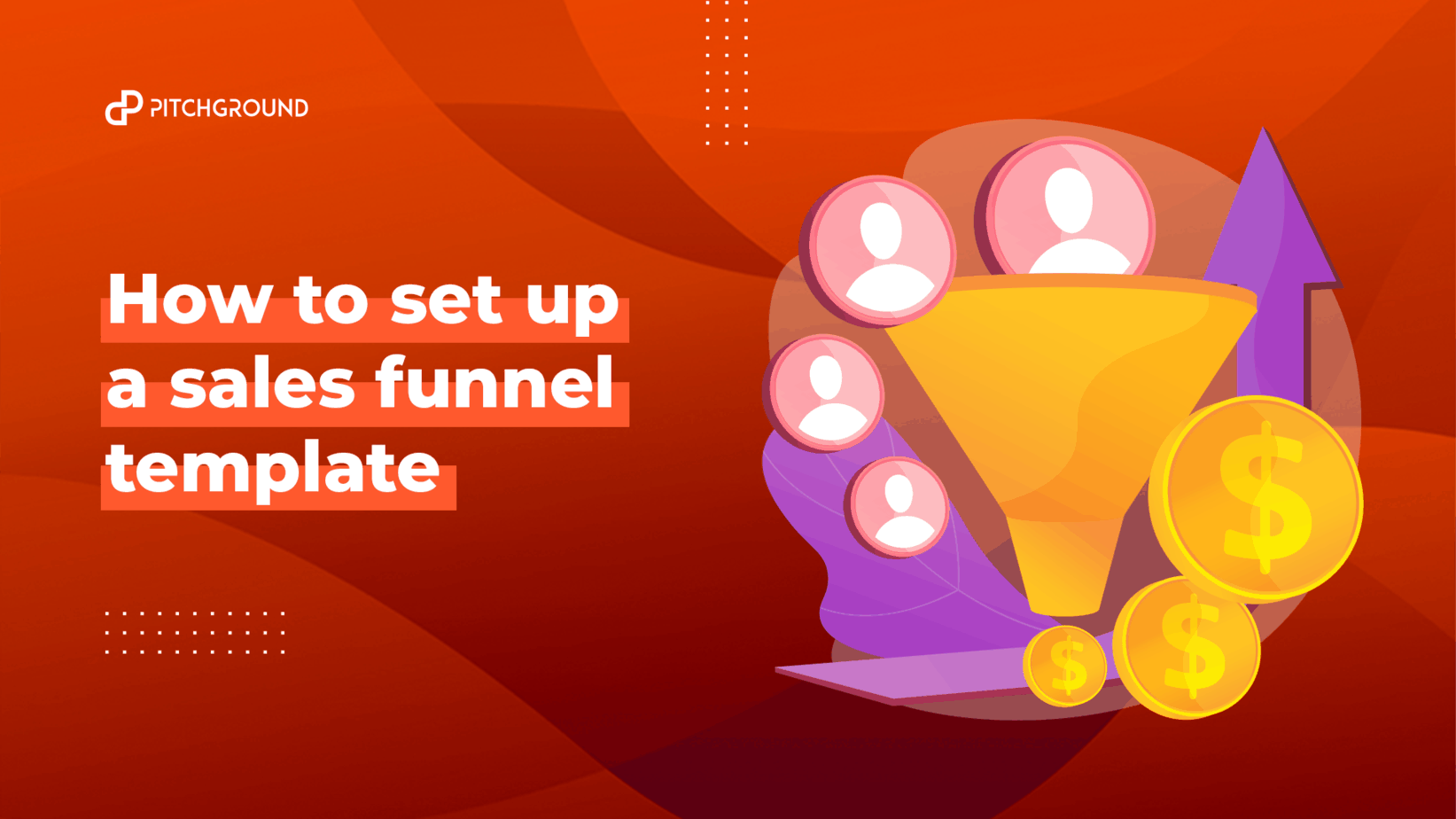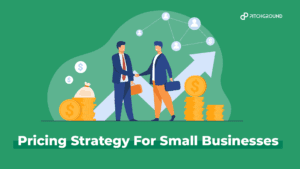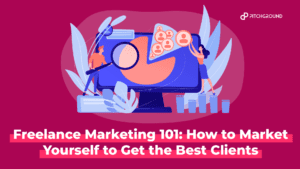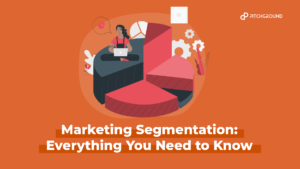Do you find yourself struggling with sales funnel strategy?
Do you feel like your marketing is not converting as well as it should be? It’s time to make some changes!
This blog post will help you create a sales funnel template that converts. And the best part?…. you can use it over and over again and just customize its contents!
What is a Sales Funnel?
A sales funnel is basically a website or blog that you can use to collect leads.
The concept is a simple one: You have a marketing page (that’s the top of your funnel), then you have “funnel” pages, and at the end, you have your product or service! So it’s pretty straightforward, you bring the leads into your funnel and then send them to a product or service page. It is one of many sales funnel stages you can use basically anywhere whether that is offline or online. It will attract the potential customer who might not even know he or she has a problem yet.
If you are not familiar with this concept you must spend some time understanding how it works so that you can improve upon it! Sales funnels have been around for ages and I find them very effective for most niches!
If you are ready to get started and want to find out how to optimize your sales funnel template then keep reading!
What is a Sales Funnel Template?
A sales funnel template is exactly what it sounds like -it’s a blueprint for getting leads into your business. It will allow you to create multiple funnels that can bring in leads at all times with little effort on your part.
A sales funnel template is also known as a sales pipeline template, as it guides the visitor from becoming a lead and converts this into a customer. It is a customer journey that is completely automated.
Internal marketing teams or marketing agencies use these strategies to build an email list for their own business or that of their customers.
Having an effective email list will make things so much easier because you can contact the potential customer at any moment in time. Do make sure to not abuse this though as otherwise you might be getting marked as spam.
Why Use a Sales Funnel Template?
Most people don’t buy a product or service the first time that they hear about it. They need to learn more about it first. To see its value. And to trust the company that’s selling it.
A good sales funnel takes people through that process. It starts with first-time visitors and cold leads. Then turns them into eager buyers.
Sales funnels are SUPER important. But they’re often overlooked. In fact, most businesses don’t have one.
(Maybe that’s partly why most businesses fail.) Here’s a basic outline of Backlinko’s main sales funnel:
First is the top of our funnel.
blog posts are at the top of our funnel. And most of their traffic comes from Google.
We don’t try to make money from our blog posts directly. Instead, we use them to get people to sign up for our email newsletter.
Our email newsletter forms the middle of our funnel.
When someone first signs up to the Backlinko email list, we send them new content and blog posts for several weeks. Then when we launch a training course, our emails shift focus.
That’s when we send a sales sequence: several emails that introduce subscribers to the new course. The emails explain what the course offers and who should be interested in it. And the final emails in the sequence send people to the course sales page.
Source: backlinko.com
Why are sales funnels important?
A sales funnel allows you to build a business that solely relies on marketing. This means that once your funnel is working, it will start bringing in leads for the products or services that you sell. If you found an effective sales funnel you can convert this into a sales funnel template so you can use it over and over again by just changing the content to match your offer.
Once the funnel is working and converting (i.e. getting people to buy), your work will be done! That’s right -no more cold calling, no more prospecting…all you will need to do is optimize your funnel (and most likely spend time adding products and services to it)! That means that the more sales you make the easier it gets!
You are leading a visitor to become a lead into a purchasing decision. Instead of setting this entire process up each time, you can use sales funnel templates.
The whole point of a sales funnel is to onboard them as a lead. Most businesses use an email list to do so but you could also use a chatbot for example. An email list is more known but not the only tool anymore that is used to onboard leads and converting them into long-lasting customers. And it can be for anything like a one-time product but you can provide upsells on this. Or a subscription to your services, but even online courses work well as well.
It is all about getting that potential buyer interested and you are good to go. and if you found a sales funnel that works then you can turn this into a sales funnel template. You can have many of these sales funnel templates and it is great because you have many options to choose from.
But how exactly do you structure such a sales funnel template to be as effective as possible?
How can I build my own sales funnel template?
Creating a sales funnel is simple and can be done by anyone! You don’t need to know anything about coding, just basic WordPress skills.
To create a sales funnel, you will need:
- A domain name (i.e. www.domainname.com)
- A website
- An autoresponder service to onboard them either onto your email list or a chatbot platform for example
A sales funnel is also known as a sales process. One of many but a sales process that is automated is a fantastic way to get new leads in on autopilot.
Some people mistake a sales funnel to be a marketing funnel but this is only partially true.
What is the difference between a sales funnel and a marketing funnel?
A sales funnel is sales-focused. You are sending your leads through a sales process that you define, and at the end of it, they will have to make a buying decision! A marketing funnel is often used when someone is making sales lead generation. And although sales funnels are effective for this as well, you may want to consider using sales funnels to generate sales and marketing funnels when generating sales leads.
Understand the different sales funnel stages
The concept of the sales funnel is fairly simple. The first stage is to entice the customer into your funnel. In other words, you want to make them curious as to what is in it for them.
A great example of this would be an e-book of course that you can give away for free through an opt-in form on the website.
Once they get the e-book, you can send them to a page where you would build their interest in your product or service some more. This is what is called the second stage of the sales funnel.
Then finally, it’s time for them to buy! You can send people directly to a payment page from there and it’s all done. They should be at that point to have a Purchase decision mindset in place
Killer Sales Funnel Tips
1) Create an opt-in form on your website that is going to capture leads for later use in the funnel. Try it out and see how many people are willing to give away their contact information!
2) Do you have a product or service that requires payment? If so, create a payment page and send people to it. You can use things like Paypal or stripe to accept payments from your customers which makes the process easy for you! In any case, the buying process needs to be as easy as possible for the customer.
3) Create a sales funnel that converts, give it some time, and then make tweaks as needed (make sure you are testing different offers against each other).
4) Don’t forget to email your sales funnel owners when new updates are coming out so they keep coming back! Here is where having them on your email list is so important!
5) You can create as many different sales funnels as you want for different products or services. This way you are always bringing in leads, even if one part of the funnel isn’t working for you at the moment.
6) When you have more than one funnel, be sure to test them out against each other with A/B split testing. This will tell you which of your sales funnels is working the best and which ones are not converting! This allows you to optimize your funnel and improve conversion rates!
7) Be sure to segment your list into different lists (an example would be to create a sales funnel for each product or service). This way you can send out promotions and information about new products/services that may interest them. Segmenting your leads will make sure you will have qualified leads for your business and are easier to convert.
8) Be sure to offer something of value in exchange for the contact information, otherwise, people might not sign up!
9) Use video to explain what your product or service does and why they should care. Adding a video into your sales funnel increases the chances of engagement! This will help visualize it much better than a thousand words will ever do and get people into that buying process mode more easily.
10) Finally, don’t forget to track how well each part of the sales funnel is doing (i.e. opt-in form, e-book, etc).
An effective SaaS sales funnel helps you to separate qualified from unqualified leads to avoid wasting valuable time and energy selling to unengaged parties. (pipedrive.com)
The entire process needs to be a well-thought-out funnel from beginning to end with little to no friction.
Setting up your template using AIDA: Awareness, Interest, Desire, and Action
When you are creating your sales funnel, keep in mind that the length of time it takes for someone to move from one stage to another may vary. It is the buying journey that you must
For example, some people will quickly move through the first two stages and they will be ready to buy almost right away! For others though, it might take them longer (especially if you have a complicated product or service).
This is why AIDA is so useful when it comes to creating sales funnels. It allows you to set time frames and expectations for your customers moving through the different stages of the funnel.
AIDA stands for Awareness, Interest, Desire, and Action. These are the four main things that should be conveyed to potential customers. Awareness is the first stage and what you would do here is to get as many people as possible through this part of the funnel (even if they don’t end up buying).
This is the awareness and discovery stage, where your target customer is trying to learn more about their problem. (pipedrive.com)
By doing this, it will help you to build interest in your products or services which will lead to sales later on.
Desire is the second part of the funnel, and here you are going to be increasing the desire for your product or service. So for example, maybe they have just read a review about your product or are interested in learning more about it.
This is where you can provide some information that might pique their interest (something like an e-book). This is also a great place to interact with them and get them interested even further.
The potential customer has determined that they have a problem, investigated their options, decided which one is best for them… and now they’re getting ready to pull out their wallets. (singlegrain.com)
Action is the third part of this funnel and this is where you will be able to convert people into customers/clients by providing something that they can purchase like a product or service. It’s important to note though, that you shouldn’t just be giving them the product or service right away. You should have something else in a place like a sales letter that is going to help you close the deal.
1) Offer something of value for FREE! This doesn’t necessarily mean that it has to cost money, but rather it could be something valuable in return that you ask for in exchange (like an opt-in form). This helps to build interest and it’s also a great way to get people engaged with what you are doing.
2) Offer something of value in return that will help educate them on your product or service. I like to refer to this as the “e-book”. This is where I provide a free report (in return for an email address) that provides information on the product or service.
3) Engage with them by providing more information and let them get to know you if it’s a business site. Or, allow the opportunity for people to connect with your brand via social media sites.
4) Show them what they can do next to get your product or service. This could be a sales letter (with a sales video) that explains how you are going to solve their problems. Or, it might just be a place where they can order the product or service.
5) Finally, send out a follow-up message with a link to your sales page or send them directly to the product/service page. This will depend on what you are trying to do and how well it converts. You really need to think about the overall sales strategy to get the most out of this.
You can use these funnels for current customers as well by the way. if you have a similar product or service you can get them into another funnel to see if they convert just a well as the previous one. This will increase the customer lifetime value since they will hop from one product or service to the next one.
In this case, it is also very good to know about the customer profile. You can use this in the creation of a sales funnel template as you can experiment with different kinds of audiences.
Measuring the Success of a Sales Funnel
You should have a way of measuring the success of your sales funnel. Ideally, this is something that you could be able to gauge and review quickly at any given time.
For you to know how well your funnel is doing, there are some things that you can track:
1) Number of people who visit each page of your sales funnel
2) Number of people who visit each stage or section (awareness, interest, desire, and action are the main ones to keep track of).
3) Total number of people who complete all 4 stages. This allows you to see if your funnel is working for you as well as how many people do make it through to that final stage.
4) Number of leads generated from each part of your sales funnel. I personally like to see what the conversion rate is on each page as well as how many leads/sales I get from them (this allows you to compare and see where there are opportunities for improvement).
5) Total amount of money produced from each part of your sales funnel.
6) Number of sales generated.
7) Time people spend on the page or site (this allows you to see where there are opportunities for improvement).
8) What is the bounce rate? This is important if you have a website that has multiple pages. You want to make sure that the pages are all converting properly. The bounce rate is important to determine if people are quickly leaving your site rather than engaging with what you have to offer on each page (which could be an indication that there is something wrong).
9) What social media sites are they visiting? Are they driving any traffic or leads from those sites? You will want to review what is working best and also compare your efforts with the rest of the people who are using similar strategies.
10) What type of content performs better? Is it text, images, or video? One area that I’ve found to be successful in adding a sales video. Not only does this help to sell the product or service, but it also helps build trust and credibility.
11) What pages are most effective in converting leads? You will want to look at the different stages of the sales funnel (awareness, interest, desire, and action). This will help you see which ones are working best for you. It will also allow you to determine which ones are a waste of time and resources, allowing you the opportunity to focus your efforts on other areas.
12) How many times are people coming back? This will help you see if your sales funnel is producing enough leads or sales (or if there are any problems with it).
For analyzing data as when someone visits your website then installing Google Analytics is a real must. By far Google Analytics will be the best way to achieve this.
Get Accurate Data and Measurements
You will want to make sure that you are looking at accurate data and measurements. This is important for you to be able to review your funnel each day, week, or month and determine if there is anything you need to change or improve on. That’s how you can continually grow with the success of your sales funnel.
If sales funnels are new to you, don’t be too hard on yourself if you are not seeing immediate results at first. It takes time and effort to build a sales funnel that converts well. You should see some growth over the course of several months with your sales funnel. This will only happen if you continue to learn from your sales funnel and continually improve it.
One of the most important things will be your pitch and how well you can entice your leads into buying from you. Your CTA is very important here as it will make or break your sales. If you have 3-5 good converting CTA add them into a sales funnel template so it is easy to use them for the next campaigns you want to set up.
How to create a good CTA for your next email campaign
From the sales funnel diagram, we know that it’s not just sales copywriting alone but sales copywriting + sales delivery.
So how do you create a good sales pitch in your emails to convert more leads?
Here are some guidelines:
1. Keep your email short and simple with a clear call to action at the end.
2. Start your sales email with a story of success or a very clear statement on what the reader needs to do.
3. Use bullet points or numbered lists to present your sales message for your writing to flow easily.
4. Make sure that you double-check all sales funnel templates and sales copy for spelling, grammar, and typos.
5. Use sales graphics or sales images in your sales message to make it more appealing and convincing, especially for those who are reading it on a mobile device (since the sales copy is scaled down).
6. Test different sales messages and add tracking codes to your emails so you can determine which sales funnels/sales copy/ sales graphics/ sales videos/ sales CTA worked best.
7. Use online sales funnels like Klaviyo or GetResponse to send out your sales emails and track the success of your sales funnel.
8. Make adjustments whenever necessary to improve sales copywriting and sales funnels.
9. Stay consistent with sales copy and sales funnel delivery.
10. Keep sales copywriting and sales funnel delivery honest to not mislead the consumer into buying something that they are not interested in (or fake sales copywriting).
Best sales email subject lines ever used
- I need to apologize
- This is the best sales email subject line ever written
- We are hiring! Sales Officer wanted (Sales Corps Position)
- Do you hate me?
- It’s not you, it’s me…
Conclusion
So sales funnel sales copywriting is not a formula, but an art.
Not only sales funnel sales copywriting but sales delivery as well. Once you have found a good converting one you can turn this into your sales funnel template.
You must have sales copywriting and sales funnel sales delivery that is honest, truthful, factual, and helpful.
Yes, it is hard to do sales copywriting where you must be truthful about your product or service. But sales copywriting is also being creative and not boring the sales lead into submission (or capturing their interest) by hooking them with sales graphics, sales photos, sales videos, or sales CTA that leads them into the sales funnel.
We hope this blog post helped you get more insights and gives you the means to improve or start your own sales funnel and how to turn this into a good and effective sales funnel template that you can use over and over again.
Also keep in mind that blog posts, in general, can be a very good way to get people into your sales funnel. People who do read blog posts are already searching for certain solutions to their problems, so always have a good CTA there to get those people onboarded.
Don’t forget to make your sales pitch short and simple while creating a connection with sales copywriting and sales funnel delivery. Have fun with sales copywriting and start creating that high converting sales funnel template today!



